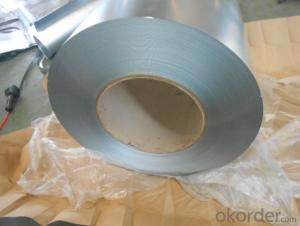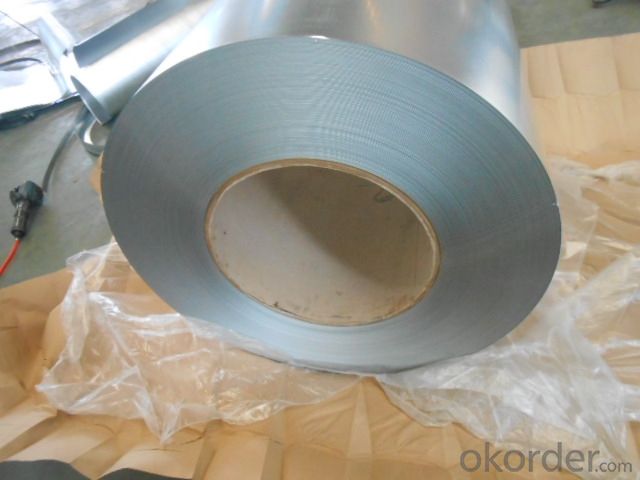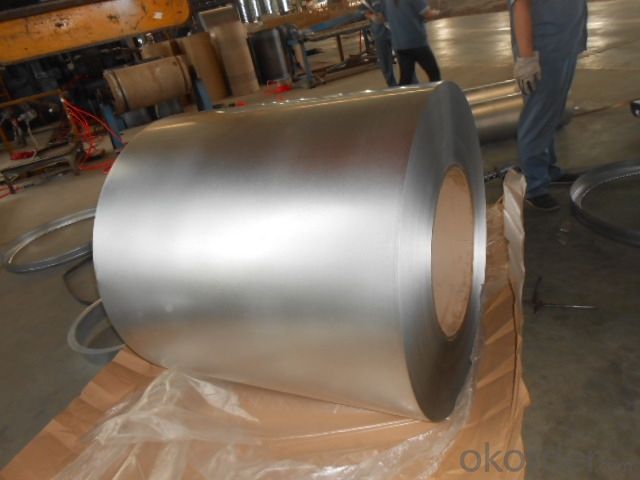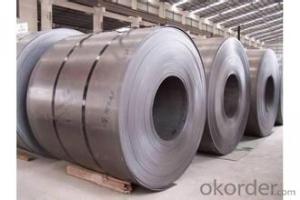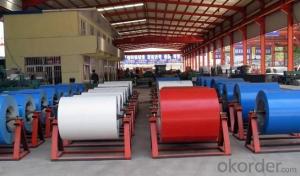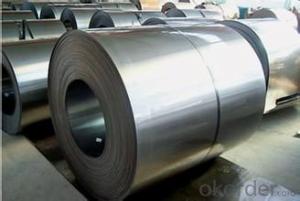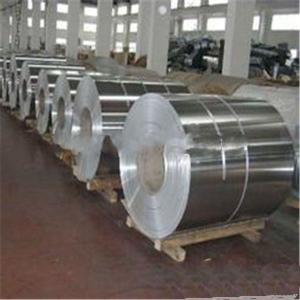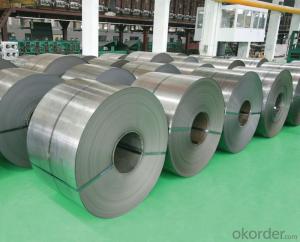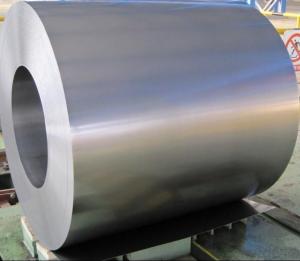High Quality Galvanised Steel in Coil
- Loading Port:
- Tianjin
- Payment Terms:
- TT OR LC
- Min Order Qty:
- 25 m.t.
- Supply Capability:
- 80000 m.t./month
OKorder Service Pledge
OKorder Financial Service
You Might Also Like
Product Description:
Quick Details
| Grade: | galvanized sheet,DX51D+Z SGCC CSB S280GD+Z S350GD+Z | Standard: | JIS,AISI,ASTM,GB,DIN,EN,JIS,AISI,ASTM,GB,DIN | Length: | 500mm-12000mm,1000~6000mm |
| Thickness: | 0.1mm-100mm | Width: | 600mm-2000mm | Place of Origin: | Jiangsu China (Mainland) |
| Brand Name: | DX51D+Z SGCC CSB S280GD+Z S350GD+Z | Model Number: | galvanized sheet,ASTM A653, ASTMA526-90, JIS G3302, DIN EN10142-92, GB/T 2518 | Type: | Plate |
| Application: | indurstry;electricity construction,home appliances,kitchen appliance, mechanical etc | Certification: | SGS | Surface: | Galvanized |
| Technique: | Cold Rolled | Special Use: | High-strength Steel Plate | Delivery Time: | 3-15 days |
| Delivery Term: | TT or LC |
Packaging & Delivery
| Packaging Detail: | Export standard package :bundled wooden box or be required; The inner size of container is below: 20 ft GP:5.8m(length)x 2.13m(width)x 2.18m(high) about 24-26 CBM 40 ft GP:11.8m(length)x 2.13m(width)x 2.72m(high)about 68 CBM We will packing as the factory ,and reach the stander of export . Or as the customer request.In addition,We will make the products with good surface protection |
| Delivery Detail: | within 3--15 days according to the Quantity |
Specifications
China supplier Galvanized Steel Sheet
1:thick:0.25-6mm
2:width:500-1500mm
3:length:any length can be cut
4:on stock
- Q: Can steel coils be used in the production of aerospace components?
- Indeed, the utilization of steel coils is feasible for the manufacturing of aerospace components. Steel, being a robust and adaptable substance, possesses an outstanding ratio of strength to weight, rendering it appropriate for a multitude of purposes in the aerospace sector. The processing and manipulation of steel coils allow for the fulfillment of precise specifications, including the creation of intricate components, structural elements, and even utilization in aerospace engines. Moreover, the corrosion resistance characteristics and capability to endure extreme temperatures make steel a dependable selection for aerospace applications.
- Q: I bought this Brinks pad lock and it says boron steel on the lock. I was just wondering what exactly is boron steel and how hard/tough is it?
- Boron steel is rather hard, it is by no means titanium, but certainly better than mild steel. However, as with all metals, hardness is inversely proportional to flexibility, meaning that a good solid whack with a sledge hammer could crack your lock.
- Q: Can steel coils be coated with anti-static materials?
- Yes, steel coils can be coated with anti-static materials. These materials are specifically designed to reduce or eliminate static electricity buildup on the surface of the steel coils, which can be beneficial in various industrial applications where static discharge can cause damage or safety hazards.
- Q: Me and my cousin have been arguing about this. I said that superman is made out of steel, but he says that people just call him the man of steel because he's hard like steel. Does he have steel in his body?
- no hes just called man of steel because hes not easy to hurt or kill so as hard as steel
- Q: Are steel buildings or homes better then wooden buildings? Why?
- Benefits of steel buildings compare to wooden buildings are: ? Strength - Metal offers an overall strength level from within, a strength that other materials can't provide, without the need of extra support beams or other extraneous materials. ? Durability - Morton Buildings are longer lasting than those made from plastic or wood, and they can withstand adverse weather conditions without danger of rotting or mildew. ? Recyclable Materials - If a building is torn down, the materials used in Morton Buildings are capable of being reused and recycled, making Morton Buildings more sustainable than others. ? Stylistic Options - Because metal can be coated with other materials at little cost, the options for color and coating are virtually endless. Materials frequently used to coat metal building include vinyl or plastic. ? Affordability - Building with steel is one of the most affordable choices a consumer can make, be it a large or small project. These benefits are numerous, though there are a few factors to keep in mind when choosing your building materials. There may also be a few downsides or cons to Morton Buildings. I think steel Buildings are good for use in : ? Metal sheds ? Metal industrial parks ? Metal barns ? Aircraft carrier buildings ? Carrier and livestock buildings ? Retail stores
- Q: What are the different types of steel coil recoiling methods?
- There are several different types of steel coil recoiling methods, including slitting, cut-to-length, and multi-blanking.
- Q: I want to buy a VERY sturdy bunkbed, but don't know which one would be better with not getting loose or falling apart.
- Metal/Steel. :)
- Q: Can steel coils be coated with phosphorescent materials?
- Yes, steel coils can be coated with phosphorescent materials. The phosphorescent coating can be applied to the surface of the steel coils, allowing them to emit a glow in the dark or low-light conditions.
- Q: i know theres steel in it but what else?
- Nickel, Chrome, others... [edit] To make ASTM A182A F316 (regular forged stainless steel), the required percentages are: 0.08%____Carbon 2.00%____ Manganese 0.045%___ Phosphorus 0.030%___Sulfur 1.00% ___Silicon 10-14%___Nickel 16-18%___Chromium 2-3%_____Molybdenum Heat treat - solution treat and quench Austenitizing/Solutioning Temp (min) - 1900°F Cooling media - liquid Quenching cool below 500°F The addition of chromium is (mostly) what makes it stainless... the other alloying elements provide it with other characteristics - toughness, weldability, temperature resistance, etc...
- Q: How are steel coils used in the production of household appliances?
- Steel coils are used in the production of household appliances as they serve as the primary material for manufacturing various components such as the outer body, frame, and internal structures. These coils are formed into different shapes and sizes, allowing for the creation of durable and robust appliances. The steel coils provide strength, stability, and resistance to wear and tear, ensuring the longevity and reliability of the appliances.
Send your message to us
High Quality Galvanised Steel in Coil
- Loading Port:
- Tianjin
- Payment Terms:
- TT OR LC
- Min Order Qty:
- 25 m.t.
- Supply Capability:
- 80000 m.t./month
OKorder Service Pledge
OKorder Financial Service
Similar products
Hot products
Hot Searches
Related keywords
